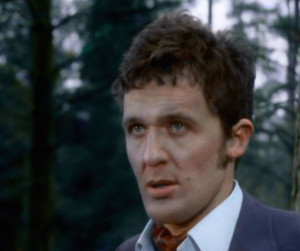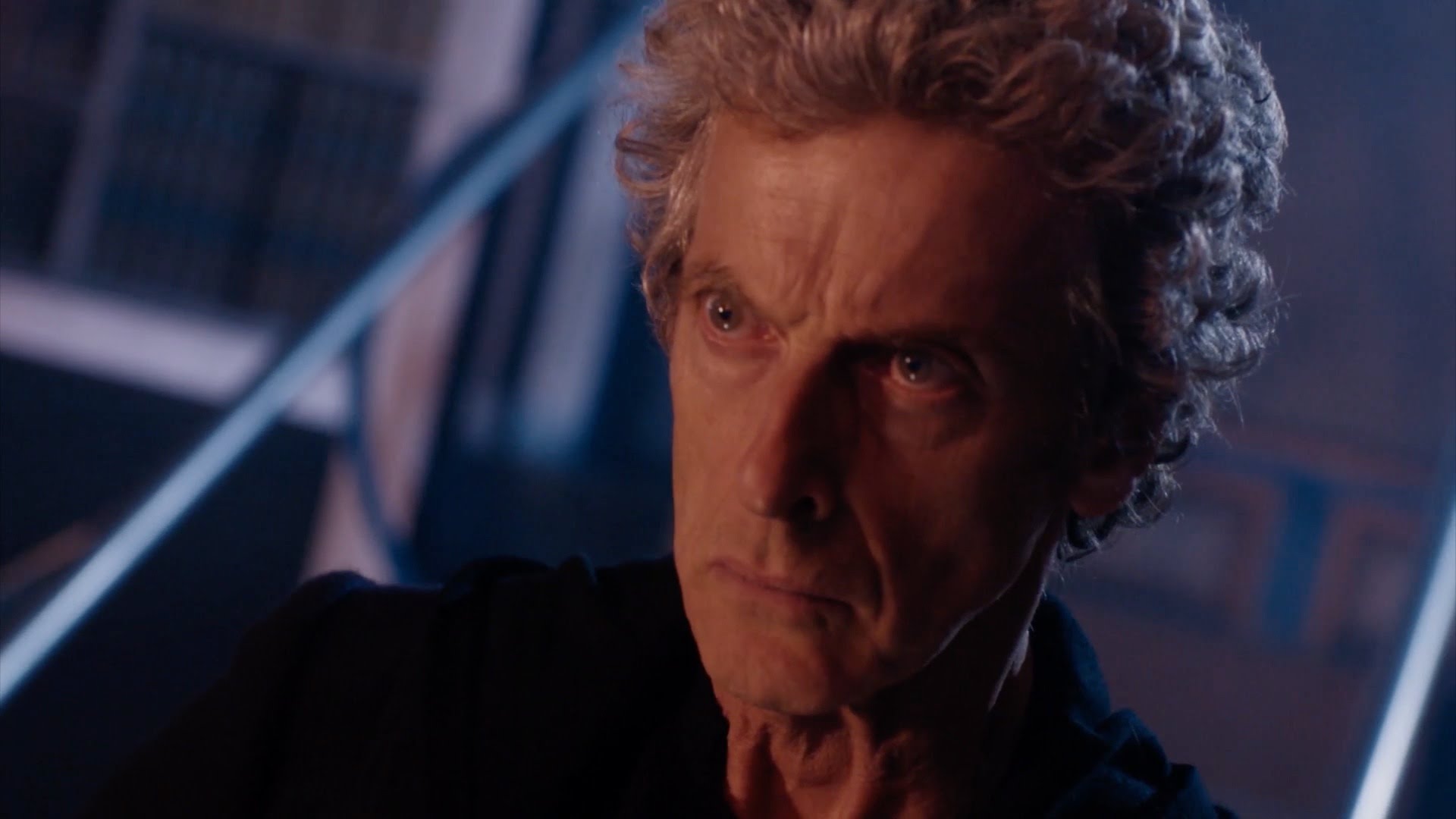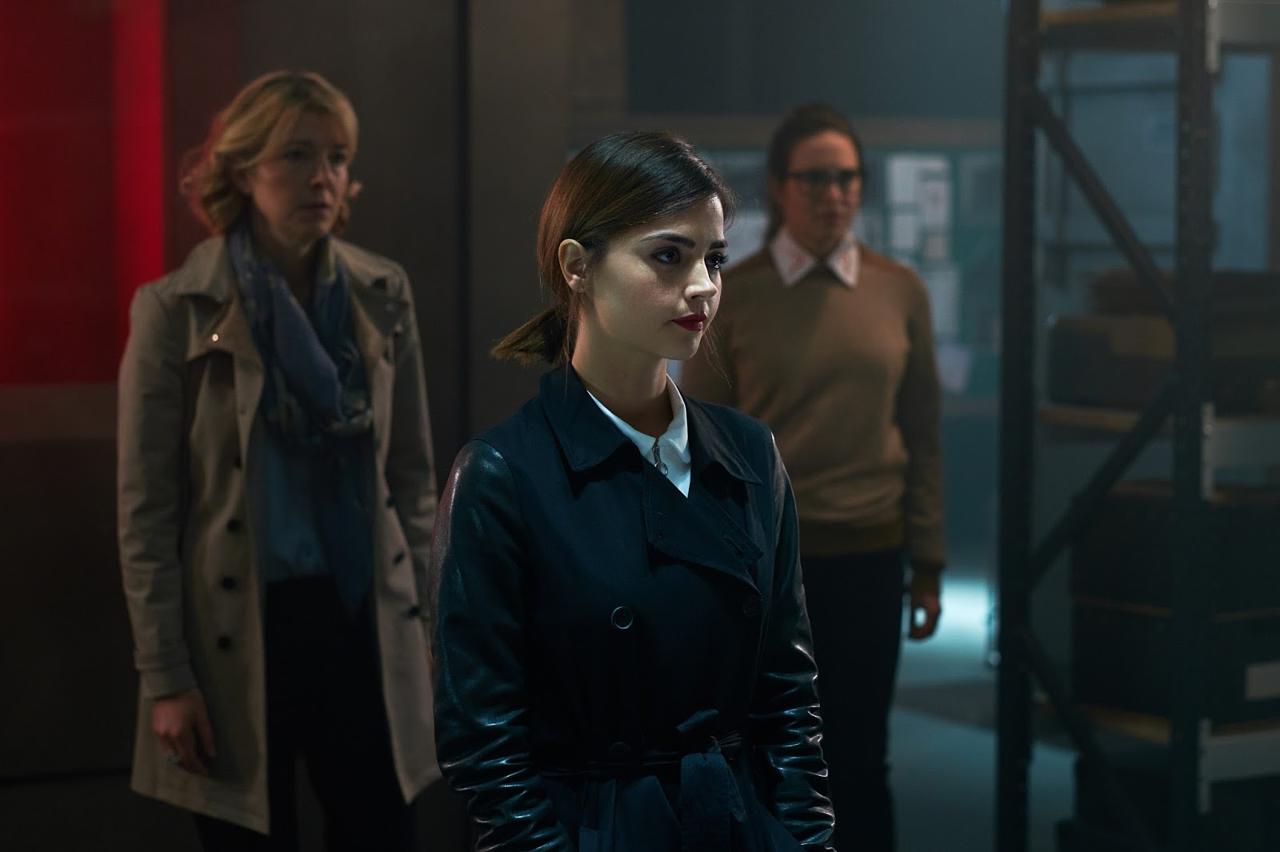More than just nostalgia, “The Zygon Invasion” is a study of contrasts of modern and classic era Who. It follows Terror of the Zygons much better than “Day of the Doctor.”
Part of the show’s longevity is its ability to express its premise with different types of stories. Most of new Who stories fall into “soft” escapist space fantasy; the primary emphasis is action, humor, and romance. My preference is “hard” science fiction that speculates technology’s effect onour human condition. Rather than escape from reality, these stories mercilessly embrace political corruption, class warfare, race and gender roles, crime, violence, and more. Examples of classic Who stories include “The War Machines,” “The Enemy of the World,” “Inferno,” “The Robots of Death,” and “The Caves of Androzani.”
Right off the bat, Peter Harness rips the politically flimsy human/Zygon detente in “The Day of the Doctor.” For a sci-fi/fantasy show, this is as topical as Three Days of the Condor. It explores the consequences of allowing millions of the shape-shifting aliens to secretly settle among us. The tension between the “off the boaters” and younger Zygons is consistent with children of Jewish and Irish immigrants who saw a big difference between the American Dream and ghetto reality of the early 1900s. “The Zygon Invasion” covers the same human/alien immigrant theme of the 1980s show Alien Nation (without the harsher social indictment of District 9.)
The focus on real world events to tell a hard science fiction story is a welcome change from new Who‘s tear-jerking fairy tales. In execution, however, that realism is undermined by gaping plot holes and genre convention. The Zygon’s year-long campaign to neutralize UNIT seems to only affect the troops; technicians, administrators and managers are unaccounted for.
When compared to modern audience media access, new Who‘s politics—especially UNIT—are under written. Moffat, and previous show runner Russell T. Davies, gave nods to diversity by casting all women in authority positions. This seems progressive until the Doctor berates them like an angry, old, white man. The tenth Doctor deposes Harriet Jones, the democratically elected Prime Minister, in “The Christmas Invasion.” Here and in “Day of the Doctor,” Kate Stewart simply isn’t allowed to act on her own opinions. This approach certainly wouldn’t haveworked on the Brig. Part of what made “The Sontaran Stratagem” great was Colonel Mace using the Doctor as a scientific advisor, then beating the Sontarans with his own solution.
The wasted potential of Kate Stewart is disappointing. Showing her make tough decisions in chaotic situations would go a long way to defining her character. Classic Who usually got this part right; Brigadier Alistair Gordon Lethbridge-Stewart always had someone to answer to, not enough resources, and wasin a constant love/hate relationship with the Doctor. In contrast, Kate doesn’t seem to have much character beyond speeches. And why the hell did she wear zebra-striped pumps? That’s more improbable than hunting for Zygons by herself in Mexico.

How did I miss that Doctor Harry Sullivan created Zee-67, the Zygon-killing nerve gas? He certainly looked angry enough to do it at the end of Terror of the Zygons. Either following orders or his own initiative to protect Earth without the Doctor, the Brigadier would have authorized UNIT to experiment on captured aliens.
Mundane realism got displaced by sci-fi adventure, but there’s plenty of room for both.
Sandeep, the lost boy in the hallway, is an example of new Who writing laziness. He doesn’t look frightened, sad, angry, or worried. He’s just an actor reading lines. If he was a Zygon participating in the trap to get Clara, his Zygon acting coach would be embarassed. Basing this scene on actual child behavior would not have ruined the episode. Like most new Who kids, however, he’s an adorable little device for Clara to look compassionate and get in the apartment.

After watching a second time, there are clues to Clara being a Zygon after the apartment scene. The Doctor and Jac look horrified by the execution of the Zygon High Command; Clara looks bored. Wanting to “swing by home and grab a couple of things” seemed odd even to Jac. In the elevator, her hand position is way too deliberate. Jenna Coleman turns in the best evil twin performance since Patrick Troughton in “Enemy of the World.” These behaviors, however, would have been more jarring if the real Clara were written better. The Doctor had no trouble spotting imposters for Martha (“Sontaran Stratagem”) and Amy (“The Almost People”).
When did the Doctor become an expert on political revolutions? He normally takes off from a battle, usually surrounded by destruction and bodies, leaving reconstruction to others. The Doctor’s aftermaths usually look like Team America: World Police. Whenever asked to stay, the Doctor runs to that TARDIS so fast his feet kicks his own behind. His constant running is a theme in the classic and modern eras…and even this season. Perhaps 2,000 years of conflict have given him “back seat driver” ideals. “…radicalize the lot. That’s exactly what the splinter group wants” is an accurate assessment, but should have been said by Jac.
Twelve is still trying to resolve Three’s losses with Silurians, who were killed by UNIT in Doctor Who and The Silurians. Three called it murder, but the plot was logistically complicated. The Brig couldn’t see that the Doctor’s solution didn’t work, and the last Silurian was about to revive the others to launch a full-scale attack on humans. That situation was closer to Japan not surrendering until getting bombed. The Doctor who said “Sometimes the only choices you have are bad ones. But you still have to choose” in “Mummy on the Orient Express” would understand this.
How did the Zygons extend the elevator shaft below the apartment building basement? They don’t have TARDIS-like transcendental dimension technology, so this extension would be 100% physical. It would take months, be loud, and shake the building. Perhaps there were enough militant Zygonsto infiltrate local government, disguising the task as replacing water and sewage pipes.
In Summary
“The Zygon Invasion” was entertaining, thoughtful and ambitious. The cinematography was outstanding, especially the outdoor Mexico scene and Zygon interiors. Considering the padding needed to get to the cliffhanger, director Daniel Nettheim paced the story he had extremely well. He certainly made the most of Jenna Coleman, who must’ve channeled her Christina Ricci as Wednesday Adams. Her portrayal of feminine evil is more effective and less exaggerated than Michelle Gomez as Missy.
A more realistic setting would have made it even better, pushing the Doctor into ethical conflict. How would he react to his advice being ignored, or to the possibility of being wrong?
TARDIS Bits
Since this is a week late, I obviously ran out of time. Shut up.
- Why do the letters of USA have long pauses between them in the typewritten intro?
- The family trick doesn’t make sense. It shouldn’t’ve worked. Hitchley’s “mother” deliberately evaded his questions. Benton would have fired.
- The Doctor still preaches peace, while benefitting from guns and bloodshed.
- Finding Osgood was too well timed. So is the bombing. How the hell did Osgood and the Doctor survive but the Zygon get killed?
- The Zygons evolving their powersis fantastic.
- “My name is, well, you can call me the Doctor” perfectly exposes his hypocrisy.
- Did evil Clara deliberately reveal the real Clara’s pod? She looks sadistically gleeful at the deaths.
- Why is evil Clara called “Bonnie?”

